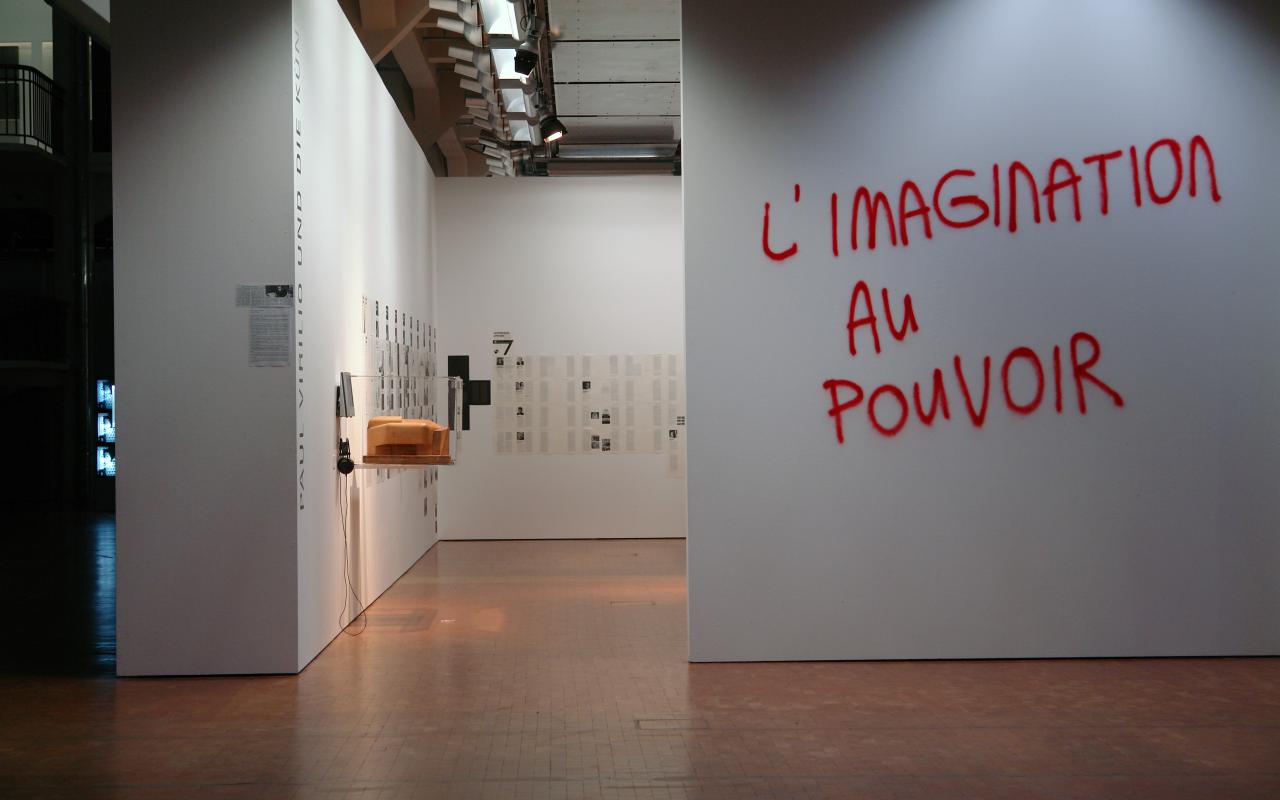Paul Virilio began as a universal artist, namely, as an architect. In the late 1950s, together with Claude Parent, he designed utopian architecture that remains astounding even today. His studies of space and space theory led him from architecture to the military machine as the actual medium of space and to technology as the actual medium of territory. Via the machine and media he discovered the primacy of time over space, a crucial axiom for modernity, from the art of the Futurists to the New Economy. With this axiom he introduced a paradigm change that defined the media discourse (e.g., War and Cinema, 1984) and had an enormous influence on Media Art from the U.S. to Japan.
The dromocratic revolution: At the center of his activities—painting, architecture, essays, exhibition, and publishing—are the themes of war, speed, and accidents. He involved himself more so than any other contemporary philosopher in debates in the field of art. Virilio’s thinking is first and foremost aesthetic; his approach is one of »esthesis«, a sensory perception of the world.
»We have to change our view in order to survive; just as we had to change life to persist, « he says in the essay »Speed and Politics: An Essay on Dromology«, 1977. For Virilio, art and aesthetics are primarily perception.
Paul Virilio is well known as a Computer-mediated communication »dromologist«Computer-mediated communication» as a critical pioneer of a »dromocratic revolution«. In Virilio’s »dromology,« the history of technology, urbanistics, military strategy, physics, and metaphysics are interwoven as an aesthetics, as a »logistics of perception«. Speed is not only a phenomenon of movement. It is also primarily one of a populated, that is, human environment. In light of future threats, Virilio is and will remain our warning conscience. In his books, which have been translated into several languages and sold widely, and in legendary exhibitions that he organized for the Fondation Cartier, Paris, he presents this »dromocratic revolution«, which reaches its climax in the design for a »museum of accidents«. The exhibition will grasp Virilio’s philosophy in numerous pictures and videos.
- Credits
- Peter Gente (Curator)
- Peter Weibel (Curator)
- Project team
Bernhard Serexhe (project management)
- Organization / Institution
- ZKM
Contributors
Tags
Audio
-
Paul Virilio und die Künste (Eröffnung: Peter Weibel)
03.11.2006 - 2:22
